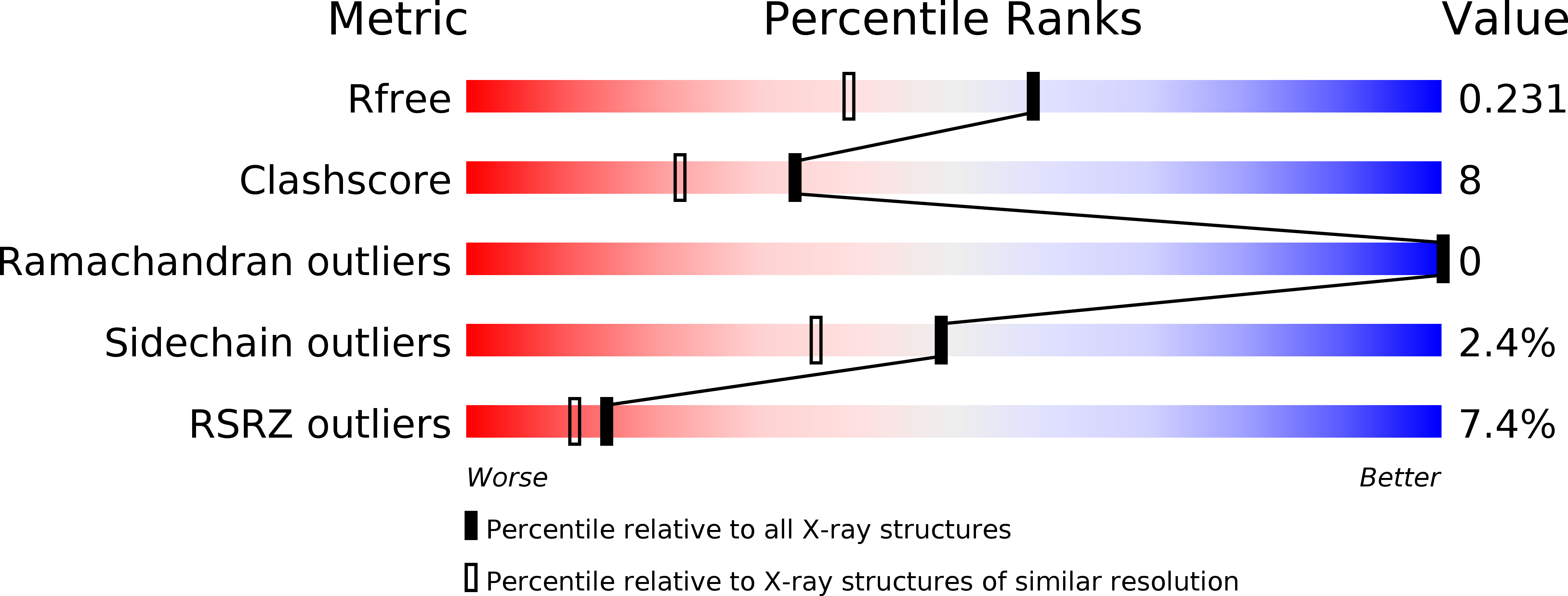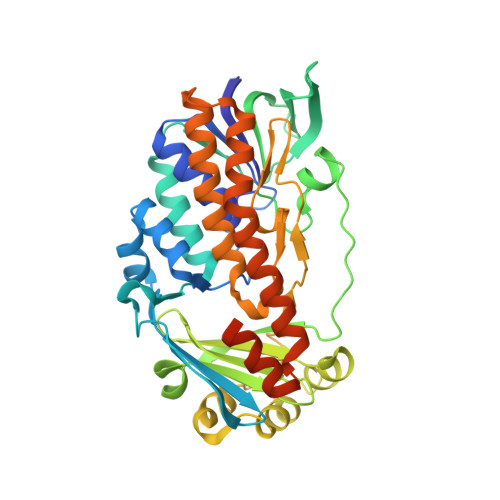Photoinduced monooxygenation involving NAD(P)H-FAD sequential single-electron transfer.
Ernst, S., Rovida, S., Mattevi, A., Fetzner, S., Drees, S.L.(2020) Nat Commun 11: 2600-2600
- PubMed: 32451409
- DOI: https://doi.org/10.1038/s41467-020-16450-y
- Primary Citation of Related Structures:
6SW1, 6SW2 - PubMed Abstract:
Light-dependent or light-stimulated catalysis provides a multitude of perspectives for implementation in technological or biomedical applications. Despite substantial progress made in the field of photobiocatalysis, the number of usable light-responsive enzymes is still very limited. Flavoproteins have exceptional potential for photocatalytic applications because the name-giving cofactor intrinsically features light-dependent reactivity, undergoing photoreduction with a variety of organic electron donors. However, in the vast majority of these enzymes, photoreactivity of the enzyme-bound flavin is limited or even suppressed. Here, we present a flavoprotein monooxygenase in which catalytic activity is controllable by blue light illumination. The reaction depends on the presence of nicotinamide nucleotide-type electron donors, which do not support the reaction in the absence of light. Employing various experimental approaches, we demonstrate that catalysis depends on a protein-mediated photoreduction of the flavin cofactor, which proceeds via a radical mechanism and a transient semiquinone intermediate.
Organizational Affiliation:
Institute for Molecular Microbiology and Biotechnology, University of M¨¹nster, Corrensstr. 3, 48149, M¨¹nster, Germany.


















